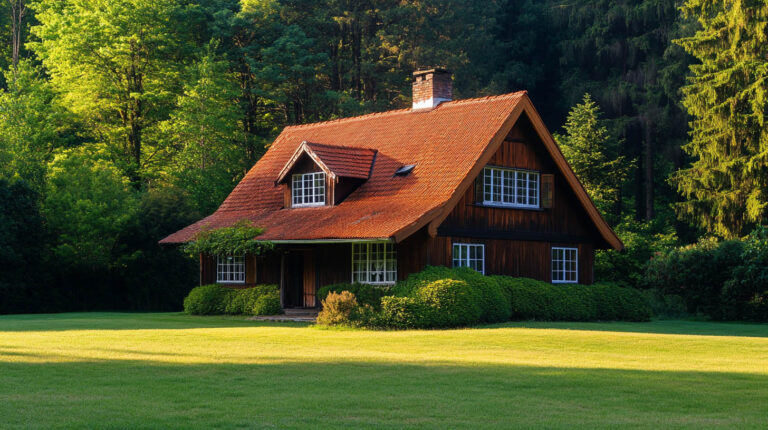
Blog
Does Heat Affect Your Roof? Here’s What You Need to Know
Extreme heat can wreak havoc on your roof over time. While most homeowners are familiar with how storms and cold weather impact their roofing, fewer people realize that excessive heat can be just as damaging. The team at Avenue Roofing in Jacksonville, FL, knows firsthand how vital it is to protect your roof from the harsh effects of heat, especially in warmer climates like Florida. Let’s explore how heat affects your roof and what steps you can take to safeguard it.

How Heat Damages Your Roof
When exposed to the sun, your roof can reach scorching temperatures of 149°F to 194°F (65°C to 90°C), especially if it lacks shade. These high temperatures can lead to several types of damage, including:
- Discoloration: Over time, intense sunlight can cause your roof’s shingles to fade or change color, making it look worn and old.
- Shingle Decay: Constant exposure to heat causes shingles to break down, particularly if they’re made from asphalt or similar materials.
- Curling and Buckling: As heat causes roofing materials to expand and contract, shingles may start curling or buckling, leading to leaks and other issues.
- Thermal Shock: The sudden cooling of roof materials after the sun sets can cause them to contract rapidly, leading to cracks and fissures that weaken your roof’s structure.
Unique Fact: Research from the National Renewable Energy Laboratory shows that cool roofs—those made with reflective materials—can reduce roof surface temperatures by up to 50°F (28°C), improving energy efficiency and prolonging the lifespan of the roof.
3 Effective Ways to Protect Your Roof From Heat Damage
1. Regular Roof Maintenance
Routine maintenance is essential for keeping your roof in excellent condition. This includes cleaning your gutters, inspecting the roof for any damage, and removing debris like moss, leaves, and branches. These materials can trap moisture and create weak spots in your roof. In winter, be sure to clear snow buildup to prevent stress on the roof structure.
2. Improve Ventilation
Adequate ventilation is a key factor in protecting your roof from heat. Roof vents allow hot air to escape and cool air to flow through, reducing the chances of heat damage. Proper ventilation also helps prevent condensation, which can weaken the structure of your roof and lead to mold growth. If you need help installing or maintaining roof vents, it’s best to seek professional assistance.
3. Install Roof Insulation
Roof insulation is another important measure that can help protect your roof from excessive heat. Insulation stabilizes the temperature inside your home, which reduces stress on your roofing materials. It also improves energy efficiency, keeping your home cooler in the summer and warmer in the winter. High-quality insulation can also reduce moisture buildup, allergens, and mold—further contributing to the longevity of your roof.
Why Heat Is a Serious Concern for Roofs in Warmer Climates
In areas like Florida, where the sun can be particularly harsh, heat damage is a constant concern. As the temperature rises, roofs become vulnerable to both structural and aesthetic damage. Dark-colored roofs are particularly at risk, as they absorb more heat than lighter roofs, which can lead to accelerated wear and tear.
If your roof is over 10 years old, it’s critical to schedule regular inspections. This allows you to identify any signs of heat damage early, saving you from more costly repairs in the future.
What to Do if You Notice Heat Damage
If you notice any signs of heat damage on your roof, such as curling shingles or discoloration, it’s crucial to take action immediately. The longer you wait, the more extensive the damage could become. Contact a roofing professional like Avenue Roofing to assess the situation and recommend the best course of action. Whether you need minor repairs or a full replacement, timely intervention can save you money and protect your home from further damage.
FAQs
1. How can I tell if my roof is damaged by heat?
Common signs of heat damage include shingle discoloration, curling, and buckling. If you notice any of these issues, it’s time to have a professional inspection.
2. What are the best materials for hot climates?
Cool roofs, made from reflective materials, are ideal for hot climates. They reduce heat absorption and help maintain a stable roof temperature, extending the roof’s lifespan.
3. How often should I inspect my roof for heat damage?
It’s recommended to inspect your roof at least once a year, particularly in regions with extreme temperatures like Florida. If your roof is over 10 years old, bi-annual inspections may be necessary.
4. Can roof insulation help with heat protection?
Yes, roof insulation helps stabilize your home’s internal temperature and reduces the stress on roofing materials caused by extreme heat.
5. Should I paint my roof a lighter color to reduce heat damage?
Yes, light-colored roofs reflect more sunlight and absorb less heat, which can prevent damage and extend the life of your roof.
Conclusion
Prolonging the life of your roof in hot climates requires regular maintenance, proper ventilation, and effective insulation. By addressing these areas proactively, you can reduce the risks of heat damage and ensure your roof remains in excellent condition for years to come. At Avenue Roofing, we offer expert roofing services tailored to protect your home from the harsh Florida sun, helping you maintain a durable, energy-efficient roof.
For further reading on roofing mistakes that can attract pests, click here.



